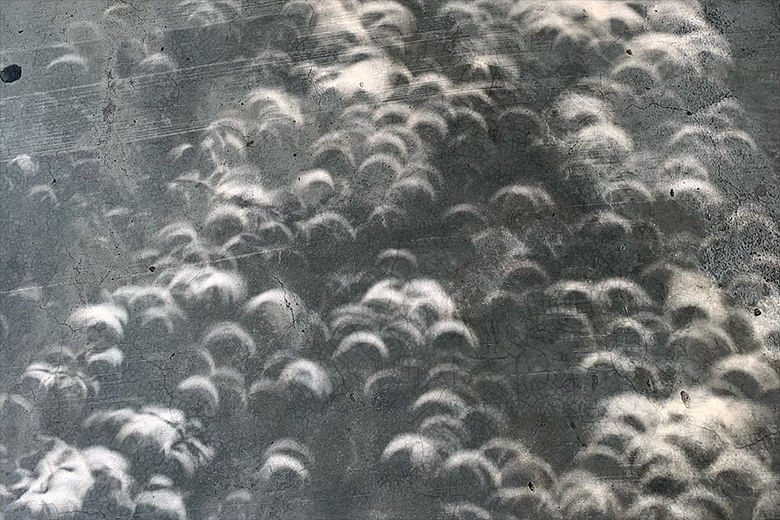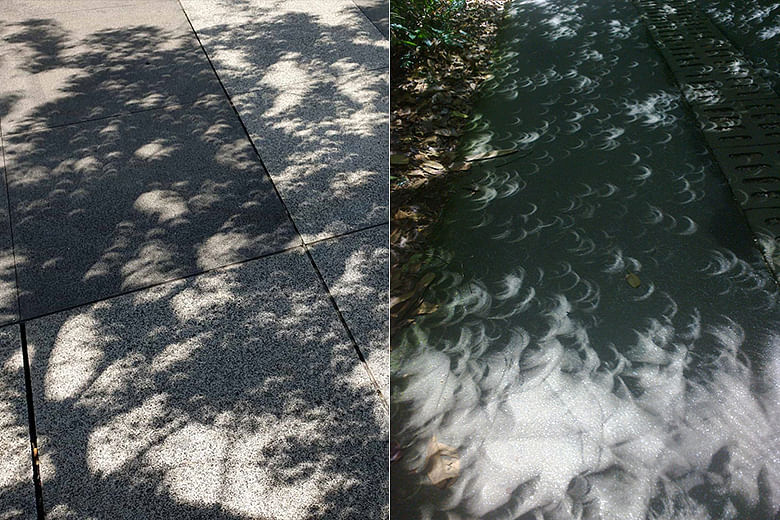SINGAPORE - Most eyes in Singapore on Boxing Day were trained on the Sun as a rare eclipse happened, but a few onlookers posted pictures of many strange crescent-shaped light patterns they noticed on the ground.
These shadowy patterns dotted pavements and walkways on Thursday afternoon (Dec 26) during the annular solar eclipse and coincided with the height of the astronomical event when the Moon covered the centre of the Sun to create a "ring of fire" effect at around 1.30pm.
The eclipse, which happened for the first time in two decades, lasted from 11.30am to 3.20pm.
While the patterns might have puzzled some people, there is an explanation for them.
According to Nasa's website, the effect that created these solar images is similar to that used in pinhole cameras.
A pinhole camera is one without a lens but with a small hole on one side.
Light passes through the hole and projects an inverted image on the other side of the box, a phenomenon called the pinhole effect.
For Thursday's eclipse, the pinhole effect also happened when light passed through patches between leaves of trees and projected crescent-shaped patterns mirroring the eclipse's "ring of fire" on the ground.



Mr Albert Ho, president of the Astronomical Society of Singapore, said that the pinhole effect actually occurs regularly.
"The light from the sun passing through gaps in leaves and objects can project a round image of the sun every day. It is because of the solar eclipse, which projects a different light pattern, that people noticed it on the ground," he said.
Mr Ho added that when light passes through multiple gaps between tree leaves, it causes multiple images to form. And during Thursday's eclipse, this created many crescent-shaped patterns.
Similar patterns can be seen during partial eclipses as well, he said.
Associate Professor Lim Tit Meng, chief executive of the Science Centre Singapore said that such solar images on a non-eclipse day would appear circular or blurry.
People can also make use of the pinhole effect to view eclipses safely, by using cardboard boxes to make pinhole projectors, said Prof Lim.
The Science Centre said that the next eclipse in Singapore will be a partial solar eclipse and is expected to occur on June 21, 2020.
The next annular solar eclipse here is expected to happen in more than 40 years' time, on Feb 28, 2063.



